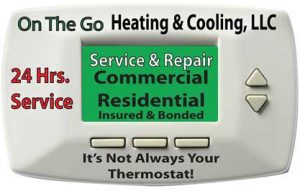Many HVAC workers have started to join forces with all sorts of public health workers in the fight against the ongoing coronavirus pandemic that is currently sweeping the world. This is thanks in large part to the fact that since the virus itself is airborne, the pandemic has been essentially put front and center for many HVAC professionals.
Many professionals are rightly concerned about wanting to keep their employees, facilities, and clients as safe as possible during these trying times, and it’s equally as important for these same professionals to be aware of the types of prevention methods that are available. In fact, according to the recently reaffirmed ASHRAE position document on airborne infectious diseases, there are a couple of demonstrated methods of prevention that have been successfully identified when it comes to controlling airborne infection.
The first method involves filters. Essentially, any type of air cleaner that works to remove air particles also has some potential to reduce the amount of exposure to the coronavirus. The big question, however, involves exactly what efficiency of air filter is actually required to be effective enough to have more of an impact on just how likely individuals are to get infected by some type of airborne illness. Perhaps the best and most effective type of filter is the HEPA filter, which are commonly used in critical care environments in healthcare facilities. These filters are 99.97% effective at being able to trap particles down to 0.3 microns in size. In terms of the coronavirus, however, this specific virus is very small, measuring in at between 0.06 and 0.14 microns in size.
Another useful method involves UV disinfection systems. Due to the fact that the coronavirus is transmitted through both the air and direct contact, it is presumed that HVAC systems are able to inadvertently spread the virus. As a result, UV disinfection systems for HVAC units are able to complement conventional filtration by addressing microorganisms that are small enough to pass through filters. Additionally, surface-cleaning UV-C systems are able to provide 24/7 irradiation of HVACR components in order to destroy bacteria, viruses, and mold that end up settling and proliferating on air filters, coils, drain pans, and ducts, thereby preventing the growth of pathogens that have the ability to become airborne and get circulated by HVAC units. ASHRAE states that the germicidal wavelength is able to kill approximately 90% of all microorganisms that live on HVAC units.
One professional had the following to say in regards to UV disinfection systems:
“Contractors are now learning that filters are designed to capture larger particulates in the air while surface ultraviolet disinfection and airstream UV disinfection are effective at inactivating pathogens. UV germicidal systems have also been shown to reduce microbial load and pathogens that are found within the HVAC system and drain pan that would otherwise be introduced and distributed throughout the envelope of the building.”
Additionally, the following was also stated in regards to the possibility of the coronavirus inadvertently being spread by HVAC systems:
“Airborne droplets containing infectious agents can remain in room air for six minutes and longer. Scientists have found that COVID-19 can remain infectious on surfaces at room temperature for up to nine days. Upper-air UV-C fixtures can destroy those microbes when they are exposed to the UV-C energy in a matter of seconds.”
